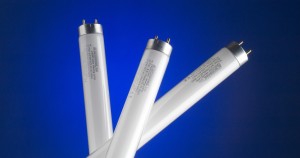
The dictionary’s definition of generic is, “A product that is not sold or made under a particular brand name.” What is your definition of generic – lower price, lower quality, good enough, or does the definition vary depending on product category? For me, generic paper towels are fine but no way am I going to use generic oil in my car’s engine. I would rather spend a few extra cents to ensure that the oil meets manufacturer’s specifications, thus helping to ensure that the car operates as efficiently as possible and reducing the chances of future repairs. My car is a large investment and I depend on it each day so spending a few extra cents today to get better performance and reduce the chance of problems down the road is a good investment.
At GTI we occasionally get asked, is it OK to use generic 5000 kelvin replacement lamps? We do not recommend it because the use of them will result in proofs and prints being viewed having a different color appearance than they did under the manufacturers’ originally specified lamps. This can result in a miscommunication of color expectations between the print buyer, design agency, and printer. Once again, using a generic brand can result in less than satisfactory performance – resulting in an unhappy customer or having to reprint a job.
Manufacturers of generic D50 lamps focus on producing long production runs of lamps that can be used in a variety of products, ranging from projectors to industrial applications. The vast majority of these lamps do not emit enough ultraviolet energy to accurately simulate daylight and meet the stringent requirements of the graphic arts and photographic industry standard (ISO 3664:2009).
In comparison GTI Graphiclite 100 lamps are designed specifically for use in critical color viewing stations. The lamps are manufactured with a unique blend of fluorescent phosphors and produce a true full spectrum white light which renders colors with the highest degree of accuracy and efficiency. In a GTI viewing station a Graphiclite lamp produces a color rendering index (CRI) approaching 95.
A light booth is a viewing system which includes the reflector, diffuser, the booth structure, geometry of illumination, and of course the lamps (particularly the lamp operating temperature). A change in this systems formulation can create a slight color cast that will impact color assessment resulting in a viewing environment that is not ISO complaint. So, always use the lamps specifically recommended for your viewing station by the manufacturer.
The best color rendition is achieved by having the closest match to the spectral power curve of the industry aim point of D50 (solid black line in both graphs). The graphs below depict the spectral power distribution of two fluorescent 5000K lamps compared with D50. The one on the left, Graphiclite 100, delivers a much closer match to the D50 curve and, therefore, delivers much greater color fidelity and tighter compliance to the ISO 3664:2009 viewing standard.

For a viewing station to consistently render high quality color that meets ISO 3664:2009 standards an optimized system consisting of lamps, lamp fixture, booth structure and environment is required. If an inferior component is introduced then the booth will perform to its level – just like a chain is only strong as its weakest link.
